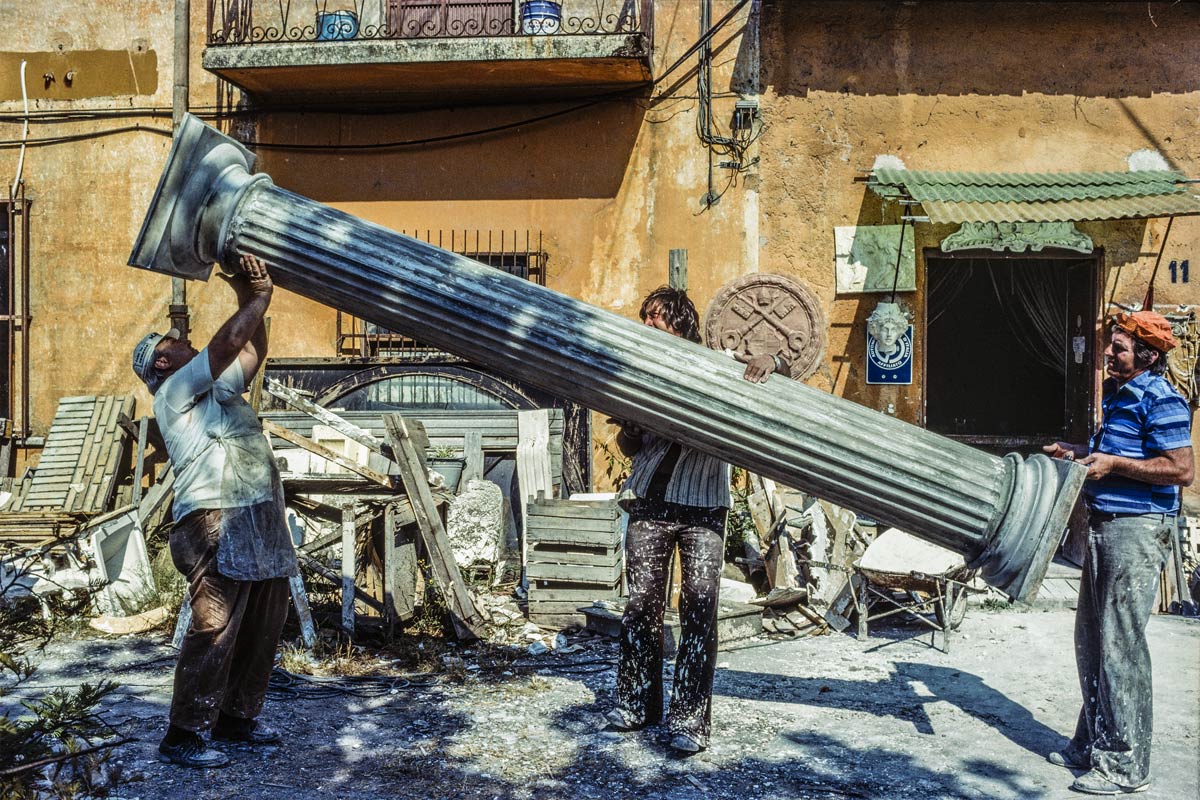| TITLE: | From Demostrations to Discoteques |
| AUTHOR: | Léa-Catherine Szacka |
| DATE: | 6.2017 |

THE EPHEMERAL CHARACTERISES THIS BIENNALE: BUT IT IS ALSO SYMPTOMATIC OF THE ARCHITECTURE OF OUR TIMES… MANY ARCHITECTS, AS WE KNOW, HAVE DISCOVERED OVER THE LAST 15 YEARS THE CHARM OF THE EPHEMERAL AND THE FUTILE,’[1] WROTE ARCHITECTURAL HISTORIAN CESARE DE SETA IN HIS REVIEW OF THE 1980 VENICE ARCHITECTURE BIENNALE FOR THE COMMUNIST NEWSPAPER PAESE SERA. DE SETA’S DISPARAGING COMMENTARY ON THE EXHIBITION REFERRED NOT ONLY TO ARCHITECTURE PER SE, BUT MAY ALSO BE APPLIED TO A GENERAL ‘SEASON’ WITHIN ITALIAN HISTORY. THIS LECTURE WILL EXPLAIN HOW, IN 1970S AND 1980S ITALY, EPHEMERAL ARCHITECTURE PLAYED A CRUCIAL ROLE IN REDEFINING ARCHITECTURE AND THE CITY, BY EXPLOITING AN INTRICATE RELATIONSHIP BETWEEN THE AESTHETIC AND THE POLITICS.
Léa-Catherine Szacka is Lecturer in Architectural Studies at the Manchester Architecture Research Centre, University of Manchester. Szacka’s work focuses on the history of architecture exhibitions and the history and theory of postmodern architecture. She has lectured and published widely on postmodern architecture and has acted as editor, with Charles Jencks and Eva Branscome, for the 2011 re-edition of The Post-modern Reader. She has contributed to journals such as Log, OASE, Arch+, AA Files, the Journal of Architectural Education, the Journal of Architecture, Domus, Architectural Design and Volume, as well as to numerous books including Exhibiting Architecture: Place and Displacement (Lars Müller, 2014) or the recent Re-Framing Identities: Architecture’s Turn to History, 1970–1990 (Birkhäuser, 2017). In early 2014, Szacka has organized a major symposium at the Centre Georges Pompidou, and as a result, she has co-edited a special issue of the Cahiers du Musée national d’art moderne (fall 2014). Also in 2014, Szacka presented “Effimero: Or the Postmodern Italian Condition”, a contribution to OMA’s Monditalia exhibition at the 14th International Architecture Exhibition – la Biennale di Venezia. Last year, she acted as project manager for the After Belonging Academy, an educational forum organized by AHO as part of the 2016 Oslo Architecture Triennale’s core program. Currently, she is preparing the edited volume Mediating Messages: On the Role of Exhibitions and Periodicals in Critically Shaping Postmodern Architecture (co- edited with Véronique Patteeuw, to be published by Bloomsbury in 2018).
[1] “L’effimero è il segno di questa Biennale: tra l’altro è un segno dei nostri tempi architettonici… Molti architetti, come è noto, hanno scoperto nell’ultimo quindicennio il fascino dell’effimero e del futile.” Cesare de Seta, I segni effimeri di questa Biennale, Paese Sera, 18 August 1980, cited in Controspazio, no. 1/6 (1980), p. 225.